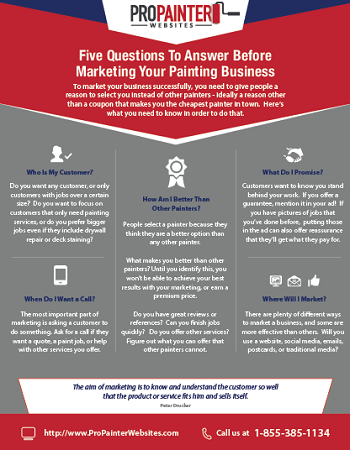Discover Exactly How Seasonal Impacts Can Influence The Effectiveness Of Commercial Outside Paint And Discover One Of The Most Favorable Times To Ensure Sturdy Results For Your Job
Discover Exactly How Seasonal Impacts Can Influence The Effectiveness Of Commercial Outside Paint And Discover One Of The Most Favorable Times To Ensure Sturdy Results For Your Job
Blog Article
Staff Author-Ford Browne
When you're preparing a commercial external painting task, seasonal aspects can make or break your outcomes. You'll want to consider just how temperature level and moisture impact paint application and drying out times. Choosing the best period can guarantee your paint adheres appropriately and lasts much longer. But which periods are truly the best for this sort of work? Allow's check out the key elements that can impact your task's success.
The Influence of Temperature Level on Paint Application
When you're intending a commercial outside paint project, the temperature level can significantly influence just how well the paint sticks and dries.
Ideally, additional reading intend to paint when temperatures vary between 50 ° F and 85 ° F. If it's as well cool, the paint may not cure correctly, causing issues like peeling off or splitting.
On the other side, if it's as well warm, the paint can dry too swiftly, protecting against proper bond and leading to an irregular finish.
You must also think about the moment of day; early morning or late afternoon uses cooler temperatures, which can be much more beneficial.
Constantly inspect the maker's referrals for the specific paint you're making use of, as they commonly provide advice on the perfect temperature array for optimal outcomes.
Moisture and Its Result on Drying Times
Temperature level isn't the only ecological element that affects your commercial external paint task; humidity plays a considerable function as well. High humidity degrees can decrease drying out times drastically, influencing the general quality of your paint work.
When the air is filled with dampness, the paint takes longer to heal, which can result in problems like poor attachment and a higher risk of mildew development. If you're repainting on an especially humid day, be planned for prolonged delay times between coats.
It's important to keep track of neighborhood climate condition and plan appropriately. Preferably, go for moisture degrees between 40% and 70% for ideal drying out.
Keeping these factors in mind guarantees your task remains on track and provides a long-term finish.
Best Seasons for Commercial Outside Painting Projects
What's the most effective time of year for your industrial outside paint tasks?
exterior house painters minneapolis and early fall are generally your best choices. Throughout these periods, temperatures are moderate, and humidity levels are often reduced, creating excellent conditions for paint application and drying out.
mouse click the next web site , which can create paint to completely dry too promptly, resulting in inadequate adhesion and coating. In a similar way, winter season's cold temperatures can impede correct drying and healing, taking the chance of the durability of your paint work.
Go for days with temperature levels in between 50 ° F and 85 ° F for optimal results. Bear in mind to check the regional weather prediction for rainfall, as damp problems can spoil your job.
Planning around these aspects ensures your painting job runs smoothly and lasts longer.
Conclusion
To conclude, preparing your commercial exterior paint projects around seasonal factors to consider can make a substantial difference in the outcome. By organizing work throughout the suitable temperature levels and humidity degrees, you'll make certain better adhesion and drying out times. Keep in mind to watch on local weather forecasts and select the right time of year-- springtime and very early fall are your best bets. Taking these steps will certainly aid you attain a resilient and professional finish that lasts.
